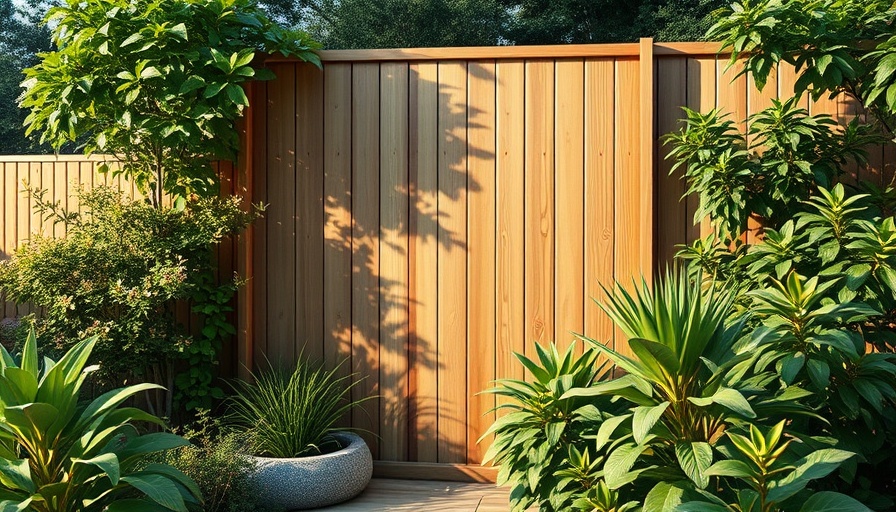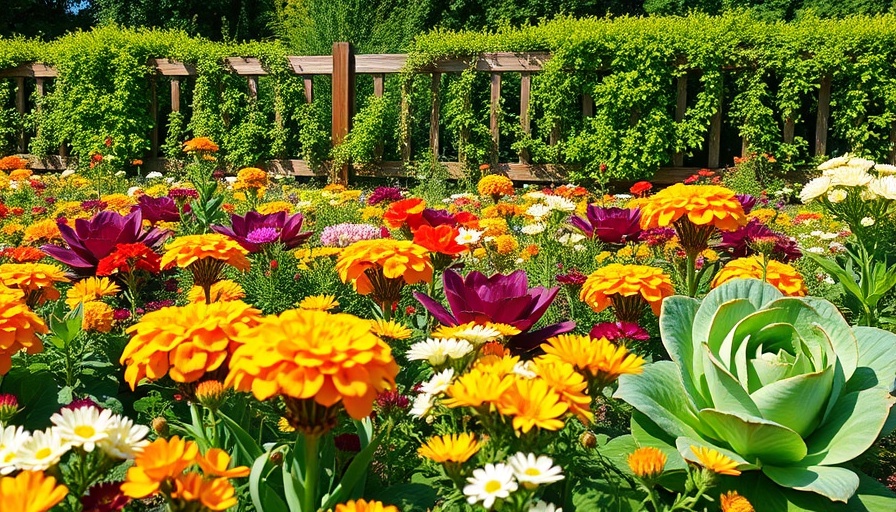
Your Backyard Oasis Awaits: Create an Espalier Privacy Screen
In urban settings, where space is limited and neighbors might be a stone's throw away, having a slice of privacy can transform your outdoor space. With an effective gardening project, you can combine beauty with functionality by building an espalier wood privacy screen. This DIY project not only screens off prying eyes but can also add a lovely individual touch to your garden with the captivating shapes of espaliered plants.
Why Choose a Wood Privacy Screen?
Wooden privacy screens serve as an aesthetic boundary while enhancing the overall look of your garden. Unlike dense shrubs or trees that could take years to reach maturity, a well-constructed wooden trellis becomes an instant feature in your outdoor area. Whether it's cedar or other durable wood types, these structures can provide an evergreen backdrop for your chosen plants, creating shadows and dappled light that soften the harsh edges of everyday life.
Understanding Espalier: The Art of Trained Growth
Espalier is not just a gardening technique; it's an art form. This method involves training trees or shrubs to grow flat against a wall or a trellis, creating a beautiful two-dimensional display. Generally used for fruit tree varieties, such as apples or pears, it can also work well with ornamental plants like the wintercreeper mentioned in the original woodworking project. By selectively pruning and guiding branches, your espaliered plants will form an intricate living sculpture, providing visual interest even in winter.
Step-by-Step Guide to Building Your Privacy Screen
Working on this project requires some basic woodworking skills and tools, but the results are worth it. Here’s how to get started:
- Gather Your Materials: For a sturdy structure, you’ll need pressure-treated lumber, concrete for stabilization, post saddles, screws, and, of course, your choice of plants to espalier.
- Build the Frame: Assemble your wood posts into a rectangular frame at your desired height—11 feet tall, for example. Ensure the stability of the posts by digging deep trenches or using sturdy post saddles to keep moisture away.
- Install Lattice: Attach a lattice or wires to your frame to support the plants as they grow. This grid structure is essential for guiding the plants into the desired shapes.
- Choose and Plant Your Espalier: Now it's time to introduce your chosen species; whether a flowering vine or an evergreen, it should complement your space while responding well to the training.
- Maintenance and Care: Regular pruning is necessary to maintain the desired shape and health of your plants.
Local Resources for Your Gardening Projects
Many local horticultural societies and gardening clubs offer workshops on DIY projects, including building privacy fences or embracing espalier techniques. You could check with nearby community gardens or library resources for books and guides that delve into advanced gardening techniques, helping you expand your knowledge base and grow your gardening skills.
Why This Project Matters
Crafting a privacy screen not only enhances your outdoor environment but provides personal satisfaction and ownership of your space. It's a meaningful way to engage with nature, allowing you to create a sanctuary to unwind, entertain, or enjoy solitude. Plus, as gardening projects spur wellness trends, this DIY endeavor can boost your mental well-being through interaction with plants.
Taking the Next Steps to Your Green Oasis
Begin planning your wood privacy screen project today! Gather your materials, sketch a design, and reach out to your local plant nursery for recommendations on the best crops for espalier growth. Invite friends or family to join you, turning the project into a collaborative garden experience filled with fun and creativity.
With these tips, your backyard will evolve into your private paradise, showcasing your personality and dedication to gardening.
 Add Row
Add Row  Add
Add 




Write A Comment